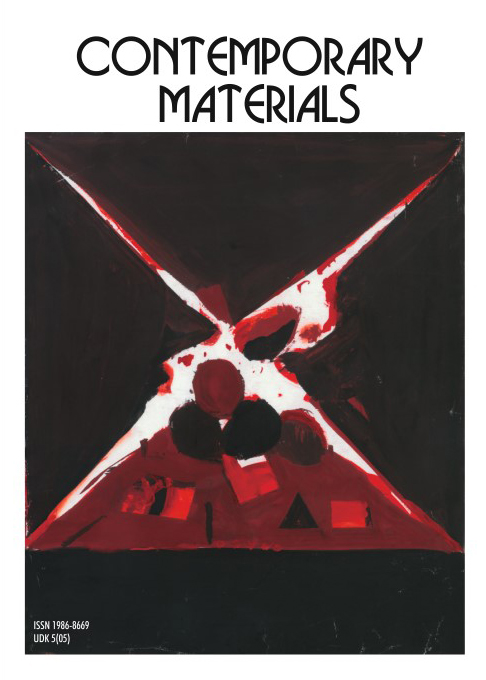ENVIRONMENTAL EFFICIENCY OF UV-ACTIVATED TiO2-MODIFIED ACRYLIC SELF-CLEANING SURFACES
DOI:
https://doi.org/10.7251/COMEN2402133SAbstract
Raising awareness of the importance of protecting the environment generates ever-increasing efforts of chemists and material scientists who seek new chemical compounds, production methods, and new types of surfaces and materials with self-cleaning abilities. Taking into consideration the data on increasing pollutant levels in the environment, materials that degrade pollutants could be an acceptable, sustainable solution to improve self-cleaning materials, especially when functionalizing large surfaces characteristic of building materials. The development of building materials that degrade polluting chemicals and carry out the mineralization of pollutant loads has now become a necessity. This work aimed to analyze the environmental performance of TiO2-modified acrylic surfaces under UV‒LED irradiation through the oxidative processes taking place on the illuminated surfaces. The simple approach of synthesis yielded highly affordable self-cleaning surfaces. The self-cleaning properties of these surfaces were tested against three frequently used textile dyes, rhodamine B, methylene blue, and methyl orange. It was demonstrated that rhodamine B was still present after 10 h of irradiation, while methylene blue and methyl orange were successfully self-cleaned after 3 h and 5 h, respectively.
